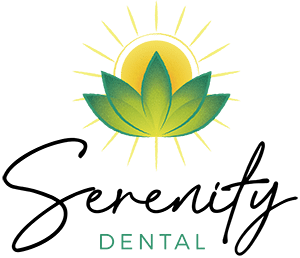Have you ever wondered why cavities are so common, even though most people brush their teeth every day? Cavities are one of the most widespread health issues in the world, yet many people don’t fully understand what they are—or how easily they can be prevented. By learning the basics of how cavities form and how to avoid them, you can take simple, smart steps to protect your teeth for life.
What Is a Cavity?
A cavity is a small hole or area of decay in the surface of a tooth. It starts when bacteria in your mouth produce acids that wear down the enamel—the hard, protective outer layer of your teeth. Over time, this erosion can lead to damage that penetrates deeper into the tooth, eventually reaching the softer inner layers like dentin and pulp.
Left untreated, cavities can lead to more serious dental problems, including infections, tooth pain, and even tooth loss. According to the American Dental Association, cavities (also known as dental caries) are the most common chronic disease among children and adults alike. But the good news? Cavities are almost always preventable with the right habits.
How Do I Know If I Have a Cavity?
It’s not always easy to tell if you have a cavity, especially in the early stages. That’s why regular dental visits are essential. However, some common signs may point to a developing cavity:
- Tooth sensitivity to hot, cold, or sweet foods
- Pain when biting or chewing
- Visible holes or pits in the teeth
- Brown, black, or white staining on the surface of a tooth
- Persistent bad breath or a bad taste in the mouth
If you’re asking, “How do I know if I have a cavity?”, don’t wait until the discomfort gets worse. A dentist can spot early signs before they become serious.
How Cavities Form and Why They Matter
Cavities develop over time through a process called demineralization. This happens when plaque—a sticky film made of bacteria—builds up on your teeth and interacts with sugars from food and drinks. The bacteria produce acid, which slowly wears down your enamel.
The main risk factors for developing cavities include:
- Poor oral hygiene habits
- Frequent snacking or sipping sugary drinks
- Lack of fluoride
- Dry mouth or reduced saliva flow
- Deep grooves or pits in teeth
- Existing dental restorations with gaps or weak points
Cavities aren’t just about toothaches. They can affect your overall health. Infections from untreated cavities can spread to other parts of the body and may even impact systemic health, such as increasing the risk of heart disease.
How to Avoid Cavities: Simple Steps That Make a Big Difference
Preventing cavities doesn’t have to be complicated. With consistency and good habits, you can significantly reduce your risk. Here are some key practices to follow:
1. Brush and Floss Daily
Brush your teeth twice a day with fluoride toothpaste and floss once a day. Fluoride helps remineralize tooth enamel and resist acid attacks.
2. Limit Sugar and Starchy Foods
Frequent consumption of sugary snacks and drinks feeds the bacteria that cause decay. Try to reduce intake of candy, soda, cookies, and even sticky dried fruits.
3. Drink Plenty of Water
Water, especially if it’s fluoridated, helps wash away food particles and neutralize harmful acids in your mouth. It’s also a great way to keep saliva production flowing.
4. Visit the Dentist Regularly
Dental exams and cleanings every six months help catch issues early and keep your teeth clean and strong. If you’re wondering, “How do I know if I have a cavity?”, this is the best way to find out.
5. Use Dental Sealants and Fluoride Treatments
Talk to your dentist about sealants for added protection on back teeth and fluoride treatments to strengthen your enamel.
Benefits of Cavity Prevention: Backed by Research
Good dental hygiene doesn’t just protect your teeth—it supports your overall well-being. Research published by the Centers for Disease Control and Prevention (CDC) and the American Dental Association (ADA) shows that effective cavity prevention leads to:
- Lower risk of tooth pain and infection
- Reduced need for fillings and other invasive dental treatments
- Better nutrition, as chewing is more comfortable
- Improved self-esteem and communication
- Long-term savings on dental costs
The ADA emphasizes that fluoride, both in water and toothpaste, plays a crucial role in reducing the risk of cavities by making enamel more resistant to acid attacks.
Cavity Prevention Starts with You
If you’re still wondering, “What is a cavity and how can I avoid it?”, the answer lies in taking proactive, consistent care of your teeth. Cavities don’t form overnight—they’re the result of ongoing habits. The sooner you make dental health a priority, the better your chances of avoiding tooth decay and its painful consequences.
Take Charge of Your Dental Health Today
Understanding what a cavity is and how to prevent it is one of the best steps you can take toward a healthier smile. Whether you’re concerned about a potential issue or just want to improve your oral hygiene routine, small changes today can mean fewer dental problems tomorrow.
If you’re asking yourself, “How do I know if I have a cavity?”, don’t wait until symptoms appear. Schedule a professional dental exam to catch problems early and get personalized advice for your smile.
At Serenity Dental, located at 1203 W Harold St. Olathe, KS 66061, Dr. Silva and the team are here to help you stay ahead of cavities and maintain your healthiest smile yet. Call us at 913-229-4519 to book your next visit—because prevention is the best protection when it comes to your teeth.

